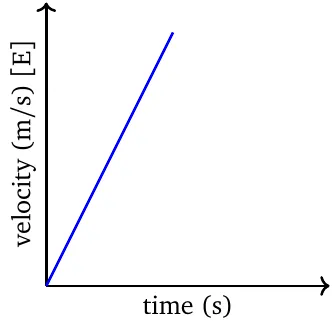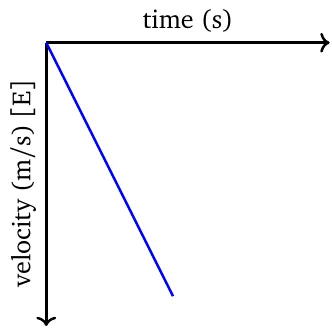Uniform acceleration
Book traversal links for Uniform acceleration
In uniform acceleration, the constant parameter is acceleration. It follows that velocity must change, either in magnitude or in direction. At this level, we only consider when the magnitude of velocity changes. This kind of motion (as well as uniform motion) is called rectilinear motion; i.e., motion in a straight line.
Because velocity changes and acceleration is not zero, we have 5 parameters: \(\vec{a}\), \(\vec{v}_i\), \(\vec{v}_f\), \(\Delta\vec{d}\) and \(\Delta t\). In order to calculate the missing parameters, we need to know 3 parameters. We have 5 equations to choose from; each of which is missing one of the 5 parameters.
\begin{align} \vec{v}_f &= \vec{v}_i + \vec{a}\Delta t \tag{missing \(\Delta\vec{d}\)} \\ \Delta\vec{d} &= \vec{v}_i\Delta t + \tfrac{1}{2}\vec{a}(\Delta t)^2 \tag{missing \(\vec{v}_f\)} \\ \Delta\vec{d} &= \vec{v}_f\Delta t - \tfrac{1}{2}\vec{a}(\Delta t)^2 \tag{missing \(\vec{v}_i\)} \\ \Delta\vec{d} &= \tfrac{1}{2}(\vec{v}_i + \vec{v}_f)\Delta t \tag{missing \(\vec{a}\)} \\ v_f^2 &= v_i^2 + 2a\Delta d \tag{missing \(\Delta t\)} \end{align}In these equations, velocity and acceleration are instantaneous values, not average. The first four equations are vector equations, while the last one is a scalar equation; hence interpreting results from the last one should be done with care.
Note that average velocity and average acceleration are calculated as follows.
\[\vec{v}_{\text{av}}=\dfrac{\Delta\vec{d}}{\Delta t};\qquad\qquad\vec{a}_{\text{av}}=\dfrac{\Delta\vec{v}}{\Delta t}\]The average rate of change is the slope of the secant line. The sign of the slope is the direction of the rate of change.
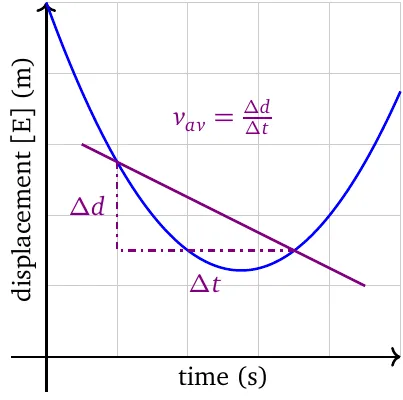
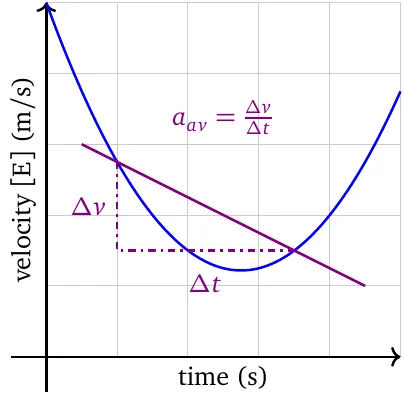
The instantaneous rate of change is the slope of the tangent line. The sign of the slope is the direction of the rate of change.
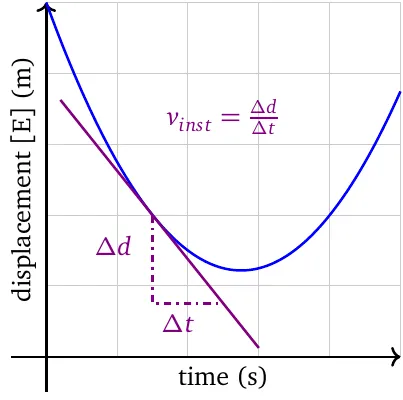
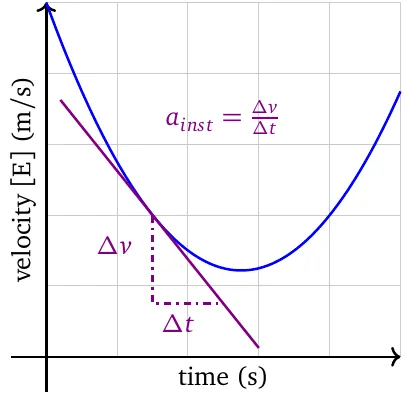
The displacement-time graph in uniform acceleration is always parabolic. It ‘opens up’ when acceleration is in the positive direction, and ‘opens down’ when acceleration is in the negative direction.
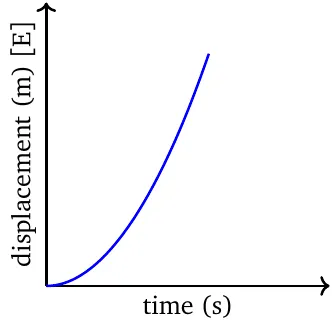
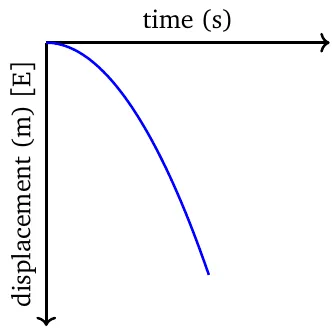
The velocity-time graph in uniform acceleration is always linear. The slope is positive when acceleration is positive, and negative when acceleration is negative.
